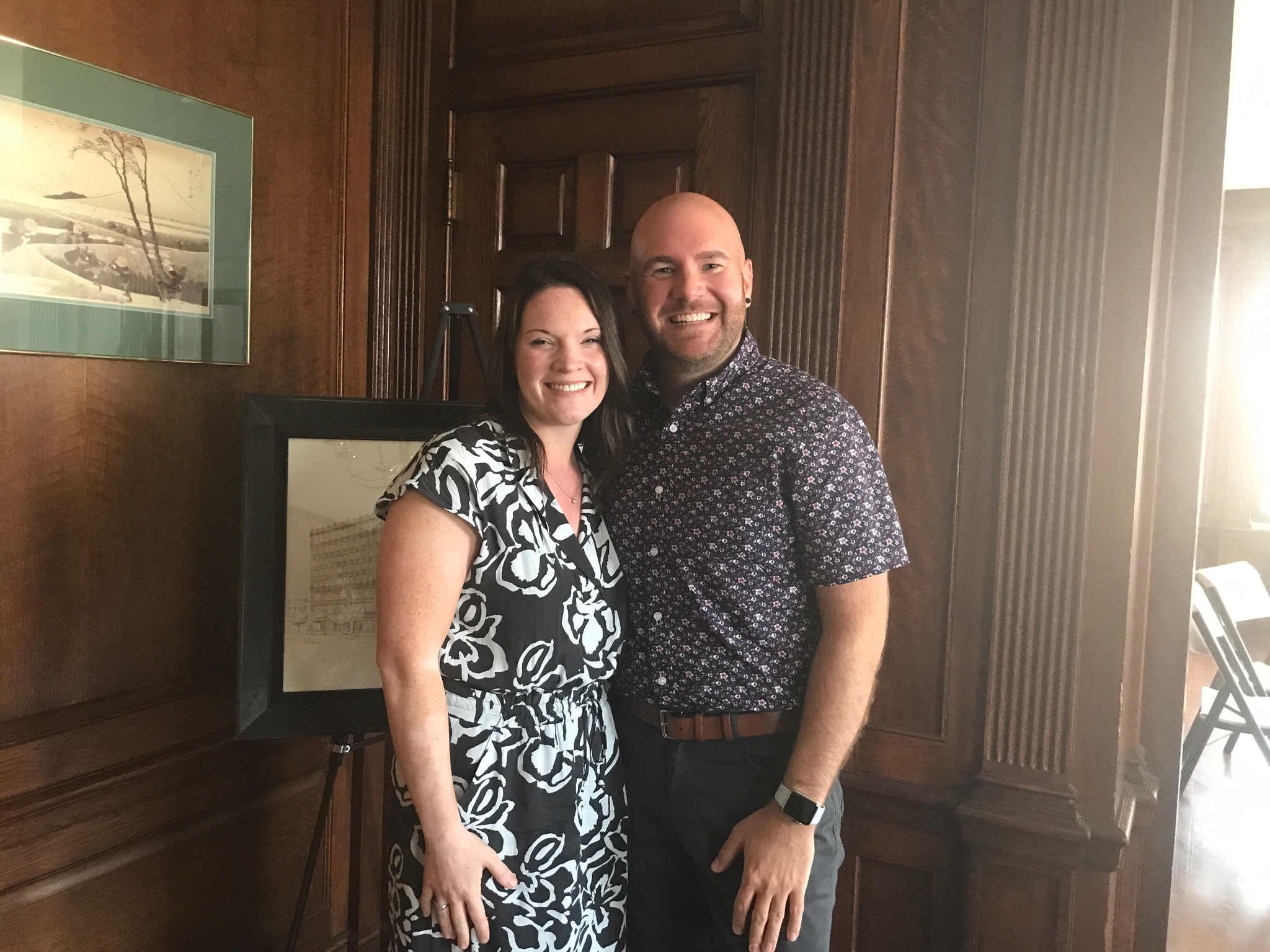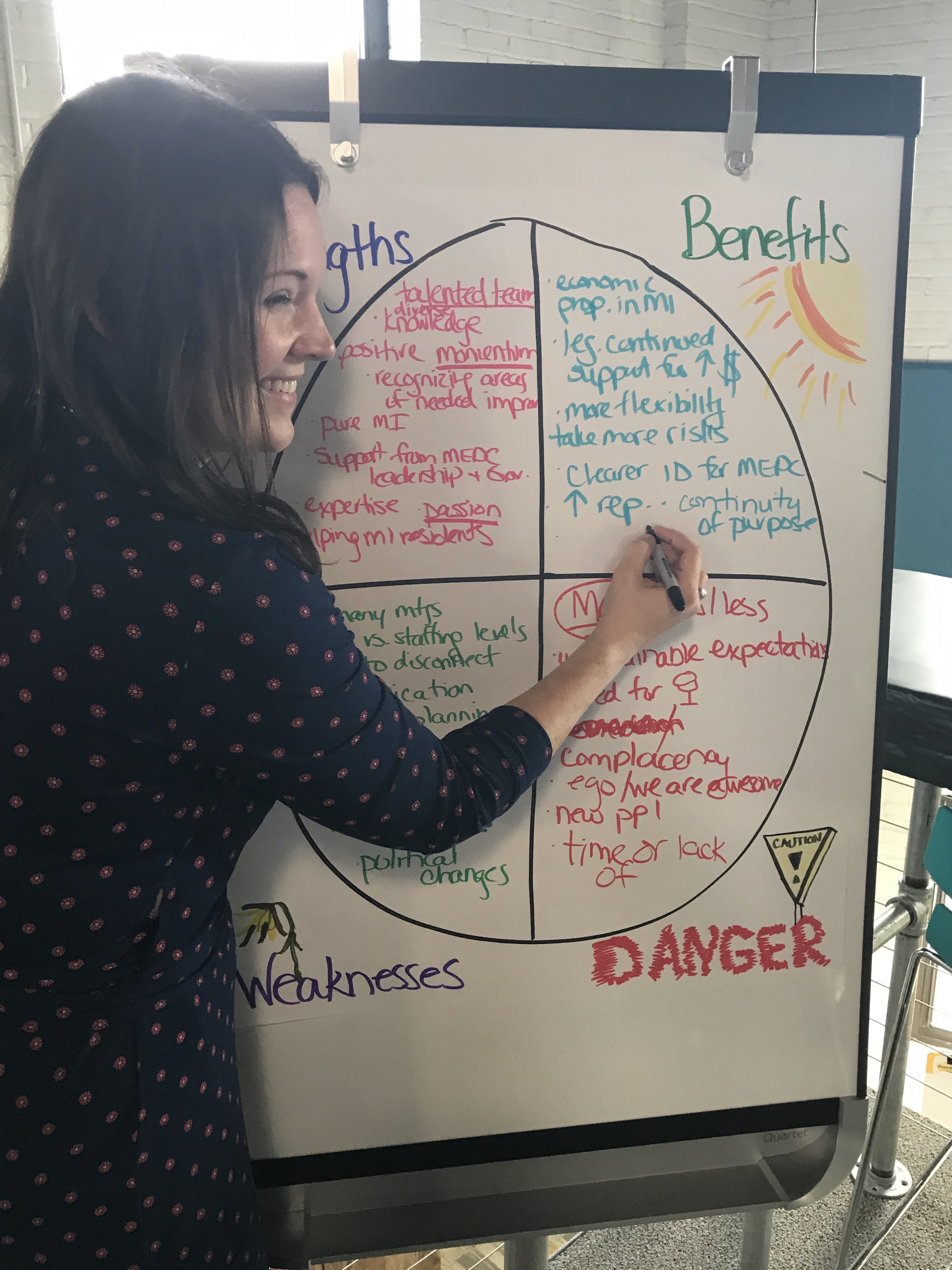 Facilitation is something so many of us are called on to do in our day-to-day work. Sometimes this work is more extensive or rigorous than others, and some of us have more or less training and experience in this important skillset than others. At the core, facilitators take responsibility for assisting groups in achieving their goals and objectives. They are generally neutral third parties who help instill a sense of ownership and involvement in the group's decision-making process. Trained facilitators typically have a foundation or process they use to design activities that guide groups to success. One such method is the Technology of Participation (ToP®).
Facilitation is something so many of us are called on to do in our day-to-day work. Sometimes this work is more extensive or rigorous than others, and some of us have more or less training and experience in this important skillset than others. At the core, facilitators take responsibility for assisting groups in achieving their goals and objectives. They are generally neutral third parties who help instill a sense of ownership and involvement in the group's decision-making process. Trained facilitators typically have a foundation or process they use to design activities that guide groups to success. One such method is the Technology of Participation (ToP®).
If you've talked with Aaron or me over the last year, I'm sure you've heard about ToP®. A little more than a year ago we began our journeys to become certified ToP facilitators. So what is ToP and how is it different than other facilitation methods? I, too, had many of these same questions the day I walked into my first ToP course. While I had facilitated a variety of meetings over the years without these methods, I wondered how this coursework would take me to the next level.
What is ToP?
ToP facilitation methods were created by the Institute of Cultural Affairs (ICA) more than 50 years ago. ICA programs work to “strengthen the capacities of organizations, communities and individuals to build and implement innovative plans of action that draw upon assets and social capital in a collaborative manner.” In their work primarily engaging communities and neighborhoods, ICA developed and tested the initial forms of these processes in the early 1960s.
These methods have been used in more than 50 countries, in major international social change ventures, in United Nations and World Bank programs, in hundreds of organizational and corporate change initiatives, adopted as internal processes by government agencies and made part of the staff training systems of international nonprofits. Few methods have had such long history and have been applied in so many global cultures.
The tenets of ToP are relatively straightforward. They are structured facilitation methods to help groups think, talk and work together. They recognize and honor contributions from all group members, identify commonalities and pool contributions into useful patterns - all while welcoming diversity and minimizing conflict.
Ultimately, the ToP methods provide ways to break out of group think, and create a safe space for all to engage, participate and achieve results.

There are many facilitation methods out there, but the Technology of Participation methods are unique. The technology is not a new smartphone app, a voice-activated smartboard or another content-heavy PowerPoint presentation. Instead, the technology rests in the methods and how they provide new and improved ways for groups to engage to achieve results. Each and every participant is given a voice and an opportunity to share their unique knowledge, expertise and experiences. The methods support each group member throughout the journey of building consensus; they are not a top-down method. Rather, they help groups create a shared vision that is owned by each group member, whether frontline staff or senior management. This creates a high level of commitment to the work across all levels of the organization.
The way in which consensus is built through ToP is unique. You do not find consensus through a quorum or Robert’s Rules. Consensus is built incrementally by focusing on commonalities and threading those together to build a shared vision and action plan.
Another way in which the methods differ is in the purposeful integration of intent. Intent is built into the workshop designs in two ways: through both the rational and experiential aims. The Rational Aim is the practical outcome or product of the workshop. The second intent, the Experiential Aim, takes into account the existing mood of the group and the desired impact that the process might have upon it. Articulating each intent sets an appropriate context for the facilitated events, aids the facilitators in planning their approach and helps in identiying relevant exercises to achieve the desired outcomes.
Who does ToP work for?
So who can benefit from the Technology of Participation? This is one of my favorite things about ToP and its network of facilitators. ToP works for anyone and everyone! Public and private entities, community and grassroots organizations, small or large groups, or the highest level of strategic planning for national and international organizations. It has been tested for more than 50 years in countless environments. Additionally, both Aaron and I have used these methods with a variety of professionals and industries, and have witnessed first-hand extraordinary results across the board.
Furthermore, ToP can be used for anything from strategic planning and staff retreats to stakeholder workgroup meetings, department/organizational needs assessments, action and event planning, and more. The methods allow for meaningful and engaging experiences no matter the situation and desired outcomes.
 What's your ToP journey?
What's your ToP journey?
I remember distinctly my a-ha moment when I first experienced the power of these methods and how they could transform the way a group thinks, works and achieves results. When attending the introductory ToP course and participating in a demonstration of one of the methods, we came to a portion of the class where you saw the work and the ideas of more than 20 people come together into a clear solution. Aaron and I literally slapped one another. We knew this was something special and were instantly hooked from that moment on. I've never really been a “rule follower." Instead, I have generally tweaked and modified things to fit “my way.” When it comes to the ToP methods, however, I understand the value and significance of both the process and the methods - and do my best to honor its history.
As a result, Aaron and I both decided to enter into the ToP certification journey together. The journey itself is intense. We attended five multi-day courses in the span of a year and worked to build our portfolios of experience. The process required us to complete countless hours of facilitation with real-life clients and at least as long reflecting and consulting with our mentors about our strengths and our opportunities for improvement.
After completing the necessary coursework and building our portfolios of work, we then had to be assessed by a panel of our peers to determine our readiness for certification. Over two hours of interview time we were given the opportunity to discuss our work. During this discussion, seasoned ToP facilitators assessed our understanding and our ability to apply the methods. And in the end, it was good news. We became the 86th and 87th Certified ToP Facilitators in the country and, incidentally, the only two in the entire state of Michigan to ever become certified!
Ultimately, this allows us to bring a more skilled, well-designed, unique, customized and effective service to our work.
How can I leverage ToP?
If you're ready to go “high tech” with us - either to learn more about the methods or to leverage these methods for an upcoming initiative within your organization - please visit the Event Garde website to learn more about us or to schedule a complimentary consultation.


